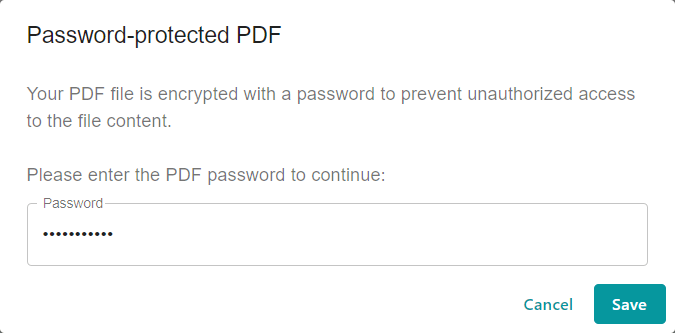Learn how PDFs are used in education and e-learning, including creating interactive textbooks and study materials, considerations for accessibility and compatibility, and the importance of security in protecting sensitive information. Discover the versatility and convenience of using PDFs for educational purposes.

Table of Contents
- Introduction to PDFs in education and e-learning
- Creating interactive textbooks
- Creating study materials
- Accessibility of PDFs in education and e-learning
- Compatibility with multiple devices
- Security of PDFs in education and e-learning
- Conclusion
Introduction to PDFs in education and e-learning
In today’s digital age, the use of technology has become increasingly important in the field of education. One such technology that has become a popular choice for educators and learners alike is the Portable Document Format, or PDF. PDFs are versatile, easy to create, and offer a range of features that make them an excellent choice for creating educational materials such as interactive textbooks and study materials. In this article, we will explore the use of PDFs in education and e-learning, including the creation of interactive textbooks and study materials, considerations for accessibility and compatibility with multiple devices, and the importance of security in protecting sensitive information.
The Benefits of using PDFs in educatin:
- One of the primary advantages of using PDFs in education is their portability. PDFs can be easily shared and distributed among students, educators, and other stakeholders, regardless of their location or device. This means that learners can access educational materials from anywhere, at any time, and on any device, making it easier for them to learn on-the-go or fit education into their busy schedules. Furthermore, PDFs are lightweight, which means that they take up minimal storage space on a device, making it easy for learners to store and access them.
- Another advantage of PDFs is their compatibility with various devices. PDFs can be opened and viewed on a wide range of devices, including desktop computers, laptops, tablets, and smartphones, which makes them highly versatile. This level of compatibility is particularly important in e-learning environments, where learners may be using different devices to access educational materials.
- PDFs also provide an excellent way to create interactive textbooks and study materials. These materials can include multimedia elements such as videos, audio, and animations, which can enhance the learning experience. Interactive textbooks can also include hyperlinks, bookmarks, and other navigational features that enable learners to easily find and access the information they need. Additionally, PDFs can be used to create a wide range of study materials, including flashcards, quizzes, and practice tests, which can be used by learners to reinforce their understanding of a particular topic or subject.
- PDFs are also highly accessible to learners with disabilities. PDFs can be created with features such as alt text, which enables screen readers to read the content aloud to learners with visual impairments. PDFs can also be created with larger font sizes, which can help learners with reading difficulties. This level of accessibility ensures that learners with disabilities can access the same educational materials as their peers, which is essential for creating an inclusive learning environment.
- Finally, PDFs can be secured with passwords and encryption, which makes them an ideal file format for distributing sensitive educational materials such as test papers or exams. This level of security ensures that only authorized learners have access to the materials, which helps to prevent cheating and maintain the integrity of the educational system.

Creating interactive textbooks
Creating interactive textbooks using PDFs has become a popular way to enhance the learning experience in education. Interactive textbooks can include a wide range of multimedia elements and interactive features that make the learning experience engaging and effective.
How to create an interactive textbook using PDFs:
- First, it is important to define the learning objectives of the textbook. This involves identifying what learners need to know and what skills they need to develop. Once the learning objectives are defined, educators can develop the content of the textbook to address these objectives.
- Next, educators need to choose the right software to create the interactive textbook. Popular options include Adobe Acrobat Pro, iBooks Author, and Microsoft Word. It is important to choose software that is easy to use and has the necessary features to create an engaging and interactive textbook.
- Once the software is chosen, educators can develop the content of the textbook. This may involve creating written content, developing multimedia elements, and creating interactive activities. The layout of the textbook should be visually appealing and easy to navigate to enhance the learning experience.
- Multimedia elements such as videos, animations, audio recordings, and images can be included to provide visual or auditory information that reinforces the material. Interactive features such as quizzes, interactive activities, and games can help engage learners and encourage active participation in the learning process.
- Finally, the interactive textbook should be tested and refined to ensure that it effectively achieves the learning objectives. Feedback from learners can be used to refine the material and improve the overall learning experience.
By following these key steps, educators can create high-quality interactive textbooks that engage learners and improve learner outcomes.
Creating study materials
How to create study materials using PDFs:
- Firstly, content creation is crucial. Educators can compile relevant information, organize it into sections or chapters, and ensure that it aligns with the learning objectives. They can include text, images, charts, and graphs to enhance understanding and provide visual aids.
- Next, educators can leverage the interactive features of PDFs to create engaging study materials. They can include hyperlinks to external resources, allowing students to explore additional information or related topics. Embedding multimedia elements such as videos, audio clips, or interactive simulations can further enhance the learning experience.
- To promote active learning, educators can incorporate interactive exercises and quizzes within the PDF study materials. This can be achieved by including fillable forms, multiple-choice questions, or open-ended prompts that encourage critical thinking and problem-solving. Students can directly input their answers within the PDF document, facilitating self-assessment and immediate feedback.
- In addition, educators can utilize features such as annotations, highlighting, and bookmarking to allow students to interact with the content. Students can make notes, underline important points, or bookmark specific pages for future reference. These features enable personalization and facilitate effective revision.
- Once the study materials are created, educators can distribute the PDFs to students. PDFs can be easily shared through email, learning management systems, or online platforms, ensuring easy access for students on various devices. They can also consider providing printed versions of the PDFs for students who prefer physical copies.
- Regular updates and revisions are important to ensure the study materials remain current and accurate. Educators can easily edit and modify the PDFs as needed, incorporating new information, addressing any errors, or responding to student feedback.
Creating study materials using PDFs offers educators a flexible and interactive approach to enhance the learning experience. By following the steps of content creation, utilizing interactive features, promoting active learning, and ensuring easy distribution and updates, educators can effectively leverage PDFs to develop engaging study materials that cater to the diverse needs of students in the realm of education and e-learning.

Accessibility of PDFs in education and e-learning
- Accessibility is a crucial consideration when creating educational materials, including PDFs. Accessibility refers to the ability of learners with disabilities to access and use educational materials effectively. In order to ensure accessibility, it is important to follow best practices for creating accessible PDFs.
- Some of the key considerations for creating accessible PDFs include using clear and readable fonts, providing alternative text for images and graphs, and ensuring that the document can be read by screen readers. It is also important to ensure that the document is navigable using keyboard controls and that it can be zoomed in without losing clarity.
- One way to ensure accessibility is to include tags and bookmarks in the PDF document. Tags provide a structure for the document that makes it easier for screen readers to navigate, while bookmarks allow learners to quickly jump to different sections of the document.
- Another important consideration is color contrast, which can impact the readability of the document for learners with visual impairments.
- Educators should also consider the needs of learners with specific disabilities when creating accessible PDFs. For example, learners with dyslexia may benefit from PDFs that use special fonts or that are structured in a way that reduces visual clutter. Similarly, learners with hearing impairments may benefit from PDFs that include closed captions or transcripts for any video or audio content.
Overall, ensuring accessibility in educational materials is a critical component of creating an inclusive and equitable learning environment. By following best practices for creating accessible PDFs, educators can help ensure that all learners are able to access and engage with educational materials effectively, regardless of their disabilities or impairments.
Compatibility with multiple devices
When creating PDFs for education and e-learning, it is important to consider compatibility with multiple devices. PDFs should be able to be accessed and viewed on a variety of devices, including desktop computers, laptops, tablets, and smartphones. This requires optimizing the PDF for different screen sizes and resolutions, as well as ensuring that the document is compatible with different operating systems and web browsers.
One way to ensure compatibility is to create responsive PDFs that can adapt to different screen sizes and resolutions. Responsive design allows the PDF to adjust its layout and formatting based on the device it is being viewed on, providing an optimal viewing experience for learners. Additionally, educators should test their PDFs on a variety of devices and platforms to ensure that they are accessible and functional for all learners.
By ensuring compatibility with multiple devices, educators can make their educational materials more accessible and convenient for learners. Learners can access the materials on their preferred devices, whether it be a desktop computer or a mobile device, and can engage with the materials on their own terms. This can lead to increased engagement and participation in online learning environments, ultimately resulting in improved learning outcomes.
Security of PDFs in education and e-learning
Security is an important consideration when using PDFs in education and e-learning. PDFs can contain sensitive information, such as personal data or intellectual property, and it is important to ensure that this information is protected from unauthorized access or distribution.
- One way to ensure security is to password-protect PDFs that contain sensitive information. This requires learners to enter a password before they can access the document, helping to prevent unauthorized access. Additionally, educators should ensure that PDFs are only distributed to authorized learners and that they are not shared or distributed without permission.
- Another important consideration is the use of secure file-sharing platforms to distribute PDFs. These platforms use encryption and other security measures to protect the privacy and confidentiality of the information being shared. Educators should also be aware of the risks of phishing attacks and other security threats, and should take appropriate measures to protect themselves and their learners.
By ensuring the security of PDFs used in education and e-learning, educators can help protect sensitive information and maintain the privacy and confidentiality of their learners. This can help build trust and confidence in the online learning environment, ultimately leading to a more positive and productive learning experience.
Conclusion
PDFs are a versatile and convenient option for creating educational materials in the digital age. Whether creating interactive textbooks or study materials, it is important to consider accessibility, compatibility with multiple devices, and security when using PDFs in education and e-learning. By taking these considerations into account, educators can create engaging and effective educational materials that meet the needs of all learners.
If you want to learn about using PDFs in healthcare for EMRs and other medical applications, you can read about it in our previous blog article.



